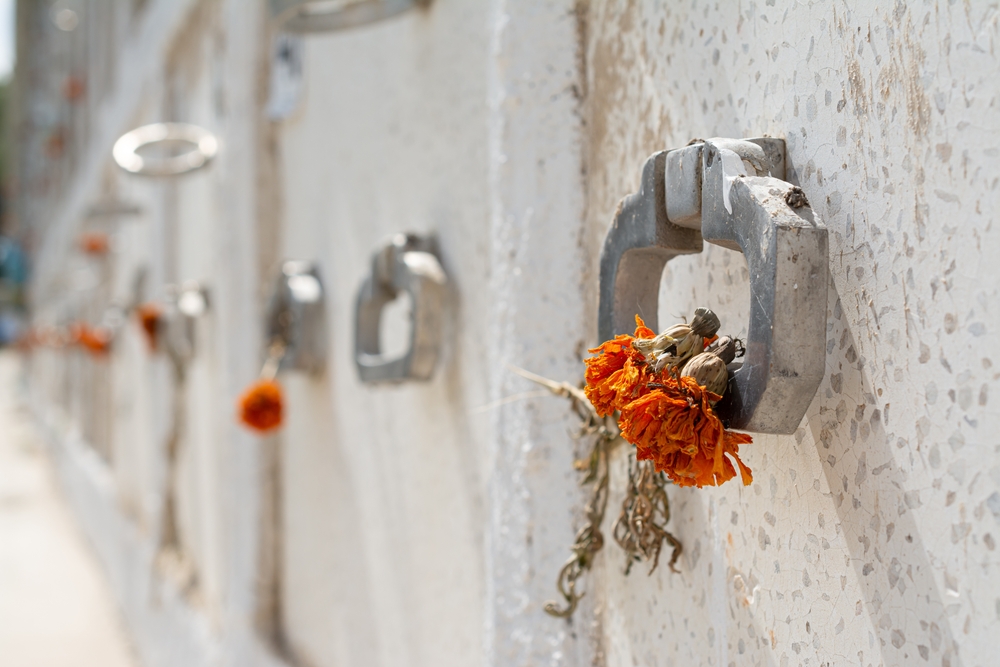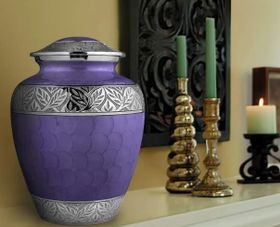Cremation Urns for Burials and Why People Use Them
Published May 23, 2022

The cremation process is an alternative method of body disposition to the traditional burial in a casket or coffin. The body is placed in a cremation chamber and incinerated in an industrial furnace that reduces it to its basic chemical compounds.
Recently, another form of cremation has gained popularity: a flameless cremation process that uses water instead of fire. The scientific name for aqua cremation is alkaline hydrolysis, whereupon the body is placed into a pressure vessel filled with water and potassium hydroxide. The vessel is heated, and pressure breaks the body down into its chemical components. Once the cremation process is done, the ashes are transferred into an urn and passed onto the family of the dearly departed. From there, they can decide to keep the ashes, bury them, or scatter them.
In this article, we have put together all the essentials you need to know about burying an urn.
Can an Urn Be Buried?
This short and simple answer is yes, cremation provides people with various options for a final resting place. Some people scatter the ashes in a special place, while others choose to keep their loved ones close with a decorative cremation urn in their homes.
However, some people choose to bury the urn, providing a place for current and future generations to gather and pay their respects. Cremation urns can also be buried on top of caskets, so if one family is traditionally buried, the other can be buried on top of them in an urn.
Reasons Why People Bury Ashes
Often, people choose to keep their loved one's ashes, but burying cremated ashes is also a popular option. Here are six reasons why people choose to bury ashes:
- Permanence Laying a loved one’s cremated remains to rest in a cemetery typically involves some sort of headstone, just like with a traditional burial of a casket. Each cemetery will have its own regulations, but burying the ashes provides a permanent resting place for the dearly departed.
- Tradition You may have many family members buried on one plot or next to each other in a cemetery. Many families are reassured by the thought of all their loved ones resting together.
- Accessibility Cemeteries are generally easy to find and accessible to anyone who wants to pay their respects. Often, it’s possible to drive close to the burial site, and paved pathways make it easy to navigate to the grave.
- Heritage A grave and headstone offer a marker for future generations to visit and gain insight into their family’s past. Names, birth dates, death dates, and location can all be helpful information when researching ancestry.
- Simplicity Placing your loved one to rest in a final resting place can alleviate the predicament your descendants may have over what to do with the ashes if it is kept in an urn at home.
- Fulfilling a wish If you choose not to bury your loved ones in a cemetery but rather in their favorite place (if legally allowed), you will know that you’ve laid them to rest in a place that makes their heart happy.
What Kind of Urn Is Best for Burials?
A stone urn made from marble or granite is possibly the best type of urn to bury, followed by metal and those made of cultured materials like resin and filler that have the strength to withstand the underground forces that cause prolonged physical stress. Another option for a burial urn includes one that will decompose. However, just about any urn can be buried as long as it meets the cemetery's requirements.
There are effectively three ways to bury an urn:
1. Burial Urns
These urns are the ones that can be buried directly in the ground and will remain intact and preserved without the need for an additional outer container. Burial vault urns serve double duty, both as a sturdy container that can be buried safely and as a beautiful urn that stores the cremains. These urns are typically made from non-biodegrading materials like granite, brass, marble, metal, and polystyrene and support the soil surrounding them, preventing a ground collapse—read 5 Reasons to Buy Brass Urns for more info.
That being said, each cemetery will have its own set of regulations, so it’s important to check with them to confirm that your chosen burial vault urn meets their requirements.
2. Eco-Friendly Biodegradable Urns
Biodegradable urns can be buried directly into the ground and are designed to decompose over time and be safely absorbed into the earth. Eco-friendly urns are a wonderful way to return your loved one’s cremains to the earth.
Biodegradable urns are often accepted in other places like memorial parks because they return to the earth, so you are not bound to a cemetery if you choose this material. Eco urns function opposite to burial vault urns because they are designed to break down safely with the surrounding soil.
3. Burial Vaults to Hold Cremation Urns
This option is ideal if you have chosen an urn that may not withstand the forces of being buried. A burial vault is a container made from sturdy materials like reinforced metal or hard plastics. It is a way for you to bury your cremation urn in a supportive environment. The shape, size, and design of burial vaults vary to accommodate different sizes and types of urns.
Most cemeteries will offer you their own urns and urn vaults, but keep in mind that you are allowed to use your own cremation urn to hold your loved one’s remains. You are also allowed to bring your own burial vault, provided it meets the necessary requirements, but often it’s easier to use the one provided by the cemetery.
Losing someone dear to you is never easy but burying their ashes in a meaningful resting place is a wonderful way to gain closure. If you would like to know more about cremation, read our facts about cremation article.





